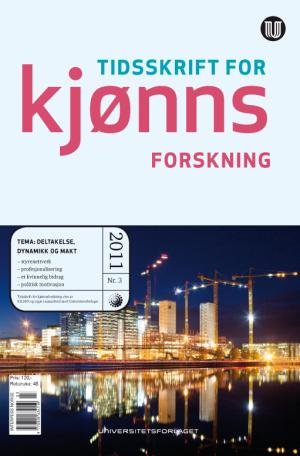Participation, dynamics and power

Articles
Trond Løyning:
Gender quotas, women, and interlocking directorates
The law on gender quotas on boards of public limited companies in Norway regulates the gender composition of these boards. However, the network of interlocking directorates is not directly regulated through this law. In this article, effects of the law on this network are investigated. The findings indicate that the law has had substantial effects on the network. It is demonstrated, through the most commonly used centrality measures, that women are in general more central in the network than men and that women now make up the majority of the most centrally located interlockers. This completely reverses the situation prevailing before the law was implemented. The article explores various aspects of the network and the board positions of the top women interlockers. One important difference between top women interlockers and top men interlockers remains: few boards are chaired by women, even in the elite group of top women interlockers who hold the position of board chair. In comparison, almost all top men interlockers hold such positions.
Key words: gender quotas, public limited companies, interlocking directorates, corporate elite
Hilde Bjørkhaug:
Women in boardrooms – catalyst for professionalization of board work?
In 2003 the Federation of Norwegian Agricultural Co-operatives decided on a voluntary programme with the aim of having boards made up of at least 40 percent women. The share of women board members consequently rose from 17 percent in 2003 to 39 percent in 2009. This effort put the federation ahead of formal legislation and also gave it an opportunity to appear as a modern organization compared with other industries and businesses. Alongside the public debate on gender balance in Norwegian boardrooms a debate took place on professionalization of board tasks and corporate governance. This paper analyses interview and observation data from four co-operative boards. While it was stressed that gender was not relevant in the boardroom, diversity of gender was also a cherished value added to the boardroom work. Women boardroom members did, however, strategically plan to make a gender neutral expression in the boards. It is suggested that filling the boardroom chairs with more women might have worked as a catalyst for the parallel process of professionalization of boardroom activities. Is it possible that Norwegian government scrutiny of boardroom equity brought what used to be backstage activities to the fore?
Key words: Women on boards, boardroom activities, board work, professionalization, agricultural co-operatives
Agnes Bolsø:
Hunting high and low – is there a particular female contribution to management?
It seems to be common knowledge that women’s values and competence are different from those of men. In the Norwegian quota debate for corporate boards, one of the main arguments has been that women’s particular contribution would increase the assets of the company. It is not clear whether having women on boards does have such an effect on the bottom line: it is more likely that it does not. However, the idea that women make a positive difference is very much alive. Bolsø discusses this way of perceiving gender difference in organizational research. She compares research within the tradition of evolutionary psychology with communication research based on Carol Gilligan’s ‘ethics of care’. The author is critical of both, and suggests that we start asking whether gender difference matters, instead of automatically assuming that it does.
Key words: management, gender, difference, ethics of care, evolutionary psychology
Jacob Aars and Dag Arne Christens:
If only more people would run for office! Gender and political motivation.
The paper focuses on the supply side of local political recruitment processes in Norway, more precisely on gender differences in political motivation. At a general level women are less motivated to become involved in political activities than are men. Still there is a considerable potential for political involvement among women. Concerning political interest, we find that women are less interested in politics in general but there is no gender difference regarding interest in politics at the local and regional level. In terms of specific policy areas, we find that women take more interest in welfare policies than do men, a result that indicates differences in policy focus between men and women. The last part of our paper deals with the question of contextual effects on political motivation. We take particular interest in the assumption that female citizens’ political motivation will be affected by the share of female councillors in their own municipality. In a multilevel analysis we find a positive, albeit relatively modest, effect of the share of female councillors on political motivation among female citizens. The evidence seems to give some support to the supposition that a high share of female councillors represents a stimulating context for potential female recruits.
Key words: political recruitment, supply-sided explanations, gender differences, contextual effects, local politics